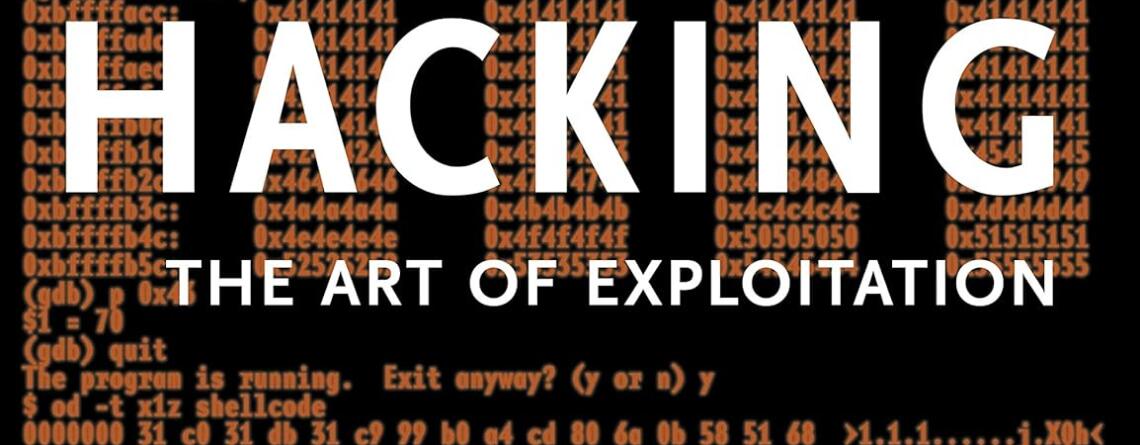Hacking: The Art of Exploitation, 2nd Edition
AKiATECH2024-07-14T15:01:52-04:00
Title: Hacking: The Art of Exploitation, 2nd Edition – A Timeless Resource in the Evolving Cyberspace
In the rapidly evolving domain of cyber technology, the line between the black hat hacker, breaching systems with malicious intent, and the white hat hacker, exploiting systems to bolster security, has become increasingly blurred. Amidst this technological battleground, “Hacking: The Art of Exploitation, 2nd Edition” by Jon Erickson, published by No Starch Press, remains a seminal piece of literature for individuals on both sides of the cyber security fence. This book, which stands out for its comprehensive detailing of hacking techniques and philosophies, continues to be a crucial resource for educators, students, and professionals in the field of information security, even years after its initial publication.
The first edition of the book made waves by demystifying the then-esoteric realm of hacking for a broad audience. However, Erickson’s second edition, expanding upon the foundation laid by its predecessor, endeavors to educate readers about the deeply technical aspects of hacking while staying accessible to those with a modest technical background. This balance is achieved through a combination of thorough explanations, real-world examples, and a live CD that provides a safe, legal environment for experimentation and learning.
$49.95 - $30.16
(as of Jul 14, 2024 19:01:58 UTC – Details)
The Philosophy Behind Hacking
Erickson opens “Hacking: The Art of Exploitation, 2nd Edition” by elucidating the philosophy underpinning hacking. Far from advocating illegal activities, Erickson positions hacking as a means of understanding and therefore securing systems. He argues that to protect a system, one must think like an attacker. This foundational philosophy is more relevant today than ever before, in an era where digital security breaches can affect millions of people and cost organizations billions of dollars.Technical Mastery
The book delves deeply into the technical aspects of hacking, encompassing subjects such as programming, network communications, cryptology, and exploitation techniques. One of its distinguishing features is the hands-on approach to learning. Erickson carefully guides readers through complex concepts such as buffer overflows, denial of service attacks, and wireless encryption vulnerabilities, making these subjects accessible to beginners while still offering depth for more advanced readers.A Learning Tool
Perhaps the most innovative aspect of “Hacking: The Art of Explication, 2nd Edition” is the inclusion of a live CD based on Linux, which allows readers to practice hacking techniques in a controlled, legal environment. This experiential learning component distinguishes Erickson’s work from other texts in the field by offering an interactive element that enhances understanding and retention of the material. The live environment has been updated to ensure compatibility with newer hardware and software, making the book’s lessons applicable in today’s technological landscape.Ethics and Tactical Countermeasures
Erickson does not shy away from the ethical considerations inherent in hacking. In “Hacking: The Art of Exploitation, 2nd Edition”, the discussion of ethics is interwoven throughout the technical tutorials, urging readers to consider the implications of their actions. Furthermore, the book goes beyond simply teaching hacking techniques by providing insights into tactical countermeasures. This coverage ensures that readers can not only identify vulnerabilities but also apply knowledge to protect systems against the very exploits they learn.The Evolving Context of Cybersecurity
Over the past few months, the cybersecurity landscape has continued to evolve, driven by technological advancements and the growing sophistication of cyber threats. Despite these changes, “Hacking: The Art of Exploitation, 2nd Edition” remains remarkably relevant. Its emphasis on foundational concepts ensures that readers gain not only the skills but also the underlying knowledge required to navigate and adapt to the shifting cybersecurity environment. In the current context, where vulnerabilities like Log4Shell and issues in supply chain security have taken center stage, Erickson’s book provides invaluable insights into the mindset and techniques that drive both the creation and exploitation of such vulnerabilities. Understanding these underlying principles is crucial for developing robust security measures and for fostering a generation of cybersecurity professionals equipped to counter emerging threats.Conclusion
“Hacking: The Art of Exploitation, 2nd Edition” is not just a book; it is a comprehensive guide to the world of cybersecurity. It manages to bridge the gap between theoretical knowledge and practical, hands-on experience. As we move forward in an age where digital security is of paramount importance, Erickson’s work continues to serve as an essential resource for those aspiring to master the art and science of hacking. In an industry characterized by rapid change, the lasting relevance of Erickson’s book is a testament to its quality and depth. By providing a deep dive into the technicalities, coupled with a steadfast commitment to ethical considerations, “Hacking: The Art of Exploitation, 2nd Edition” endures as a pivotal tool for anyone looking to understand or enhance the security of digital systems in a nuanced and comprehensive manner. Whether one’s goal is to protect digital assets or to delve into the intricacies of hacking with curiosity and an eagerness to learn, this book lights the way in the vast, often murky, realms of cyberspace.(as of Jul 14, 2024 19:01:58 UTC – Details)
Discover more from Akiatech Solutions Blog
Subscribe to get the latest posts sent to your email.
